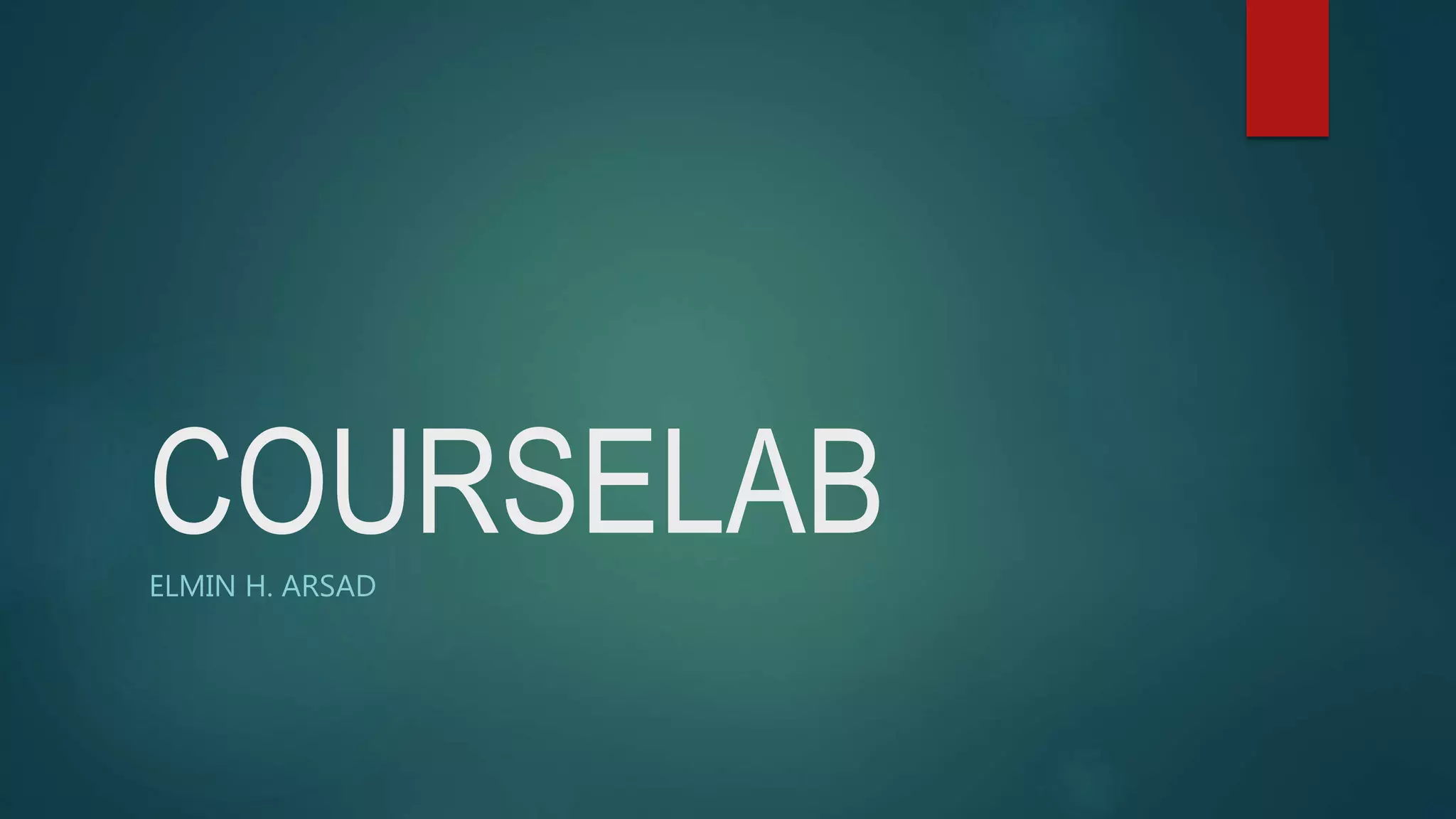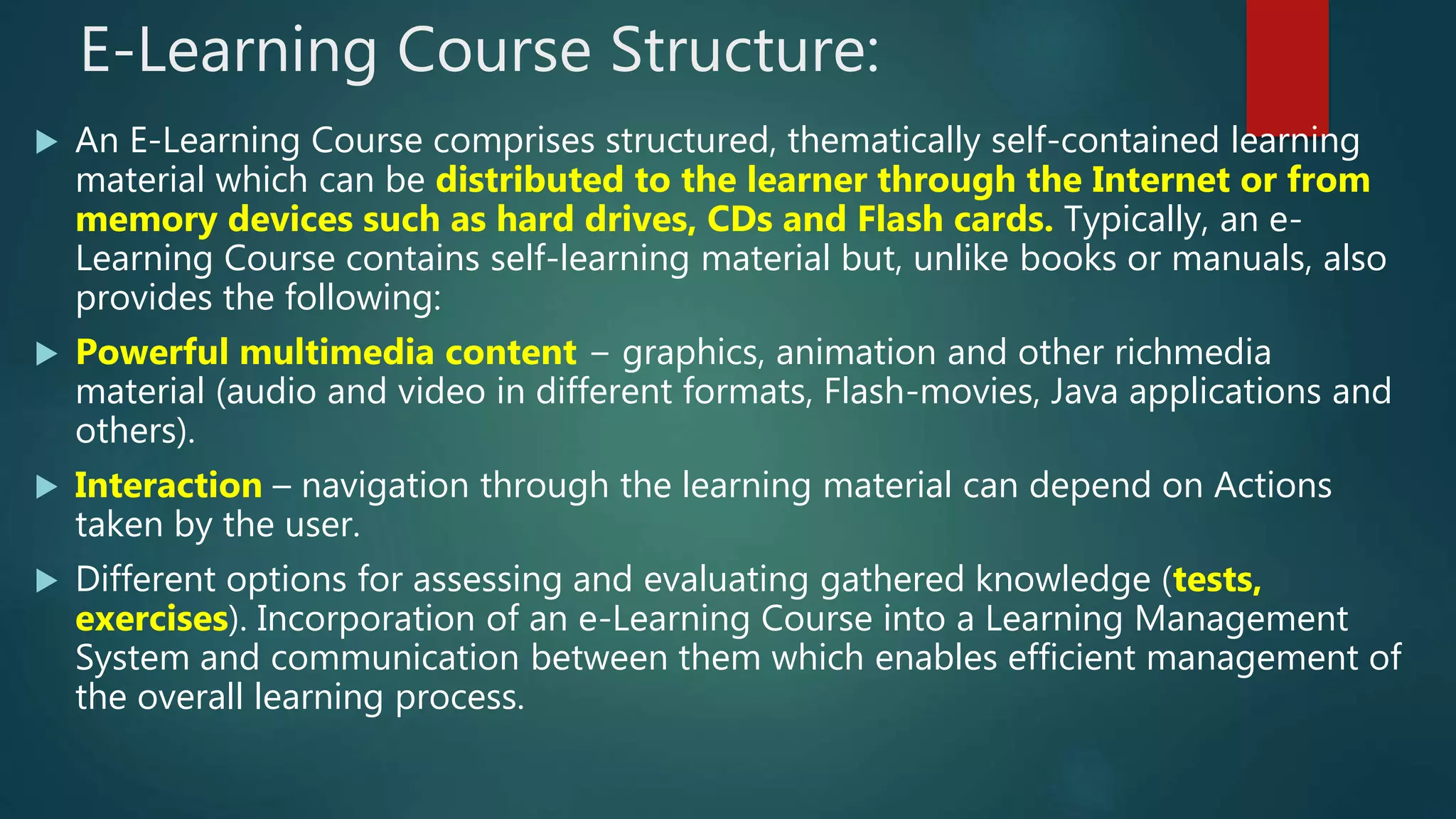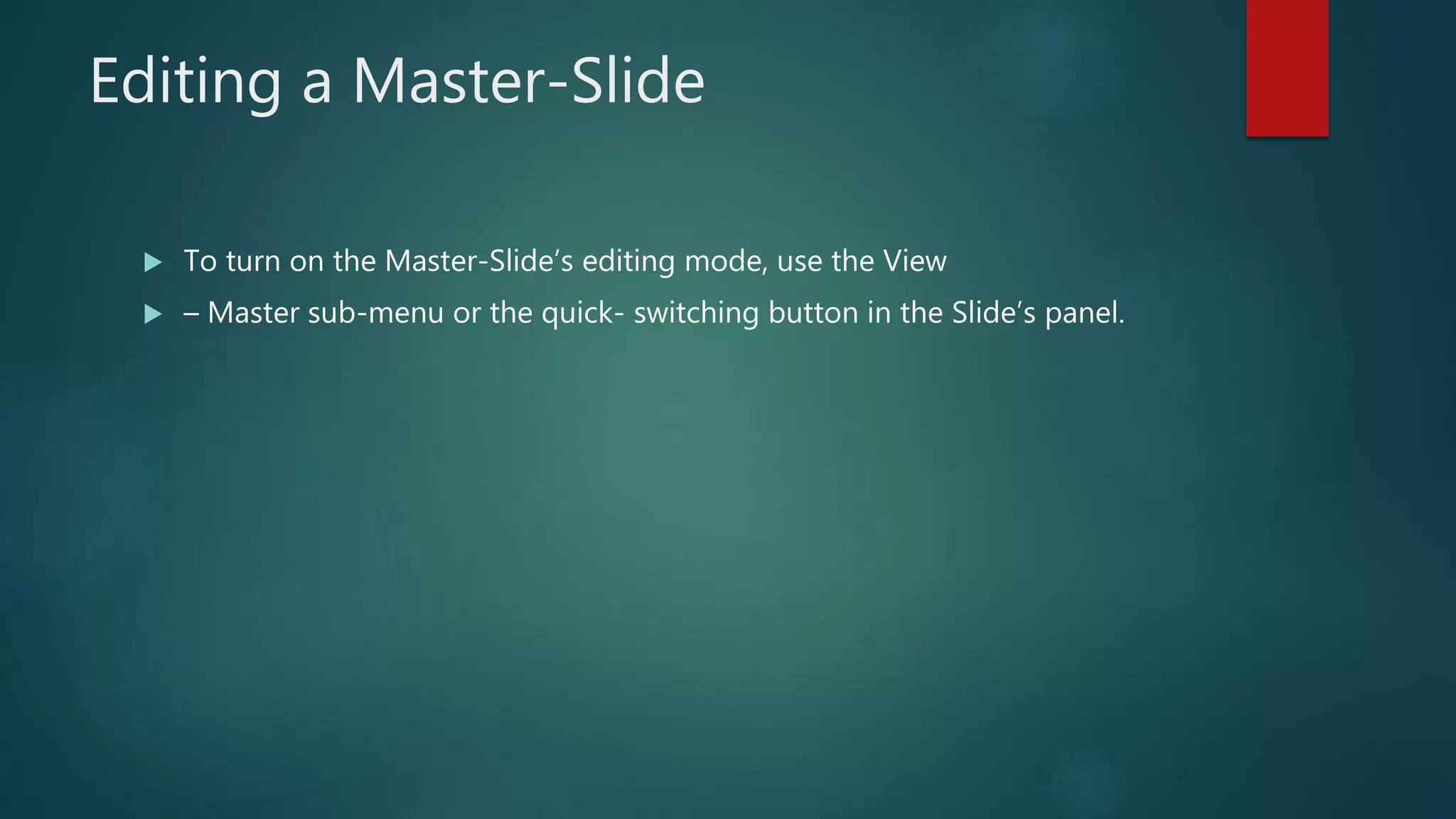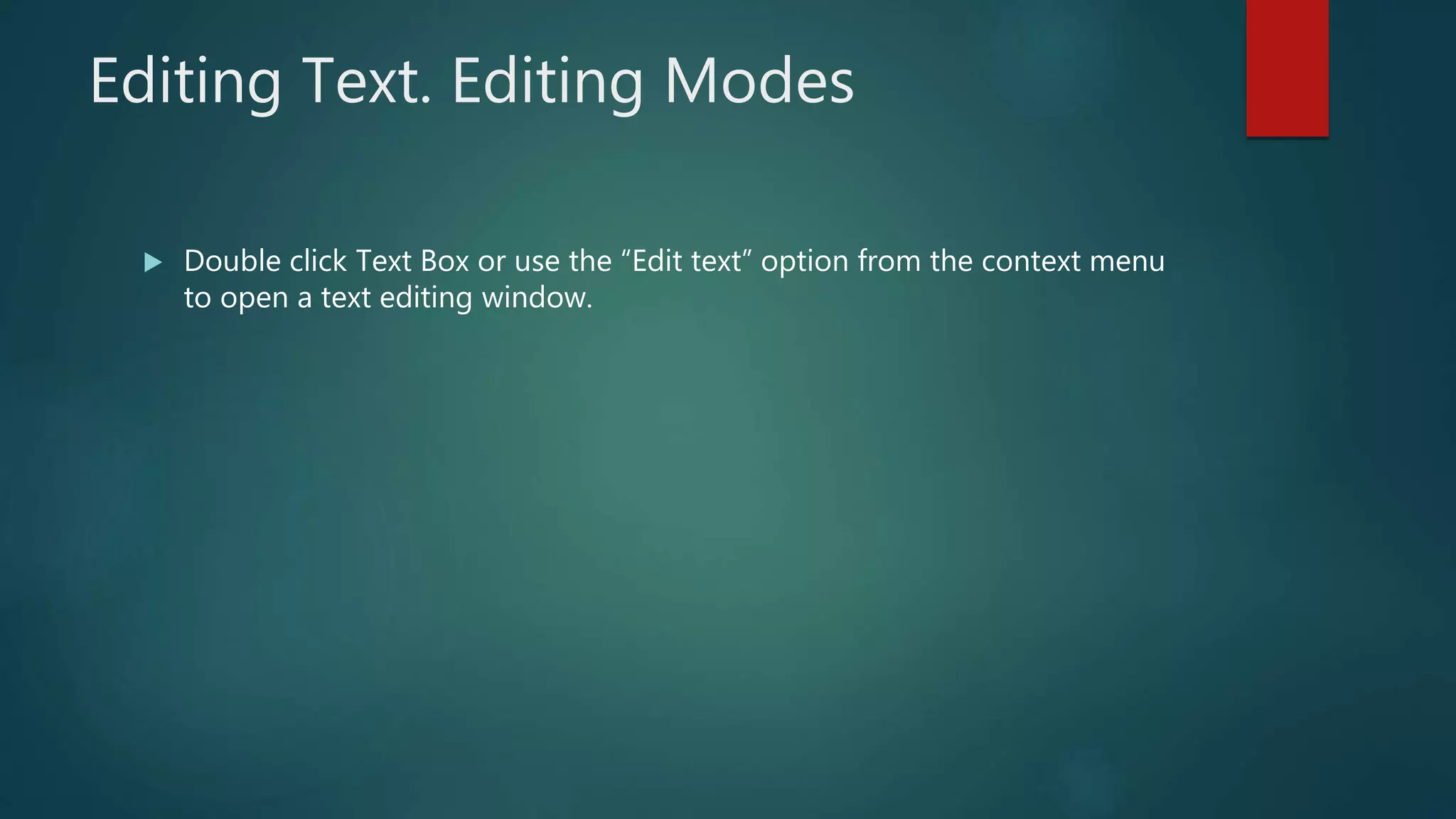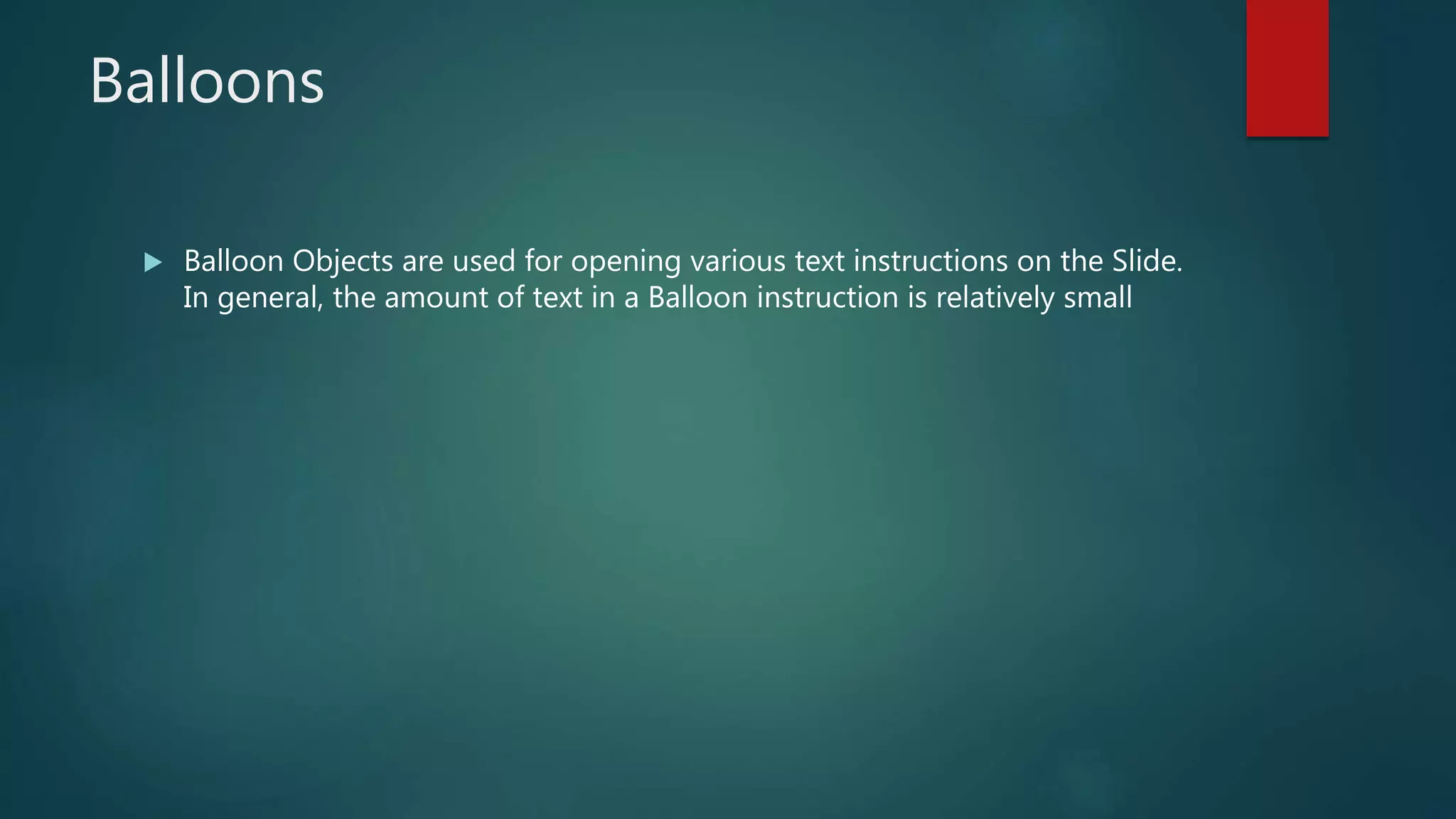CourseLab is an easy-to-use e-learning authoring system that allows for the creation of interactive courses without programming. It provides a WYSIWYG interface and allows importing of media like Flash, video, and PowerPoint. Courses created in CourseLab can be organized into learning modules containing slides with text, images, and other interactive elements. The slides can be previewed and arranged, and the system provides tools for structuring courses, modules, and slides to create an effective online learning experience.
